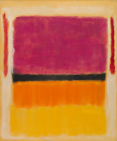Abstract
This article is a study of the many 'colors' of love in Niẓāmī Ganjavī's Haft paykar (The Seven Figures), with special attention paid to the (evidently) dichotomous poles of white (purity) and black (concupiscence). The argument is divided into four sections: after introducing the Haft paykar and summarizing some of the scholarship that has been done to crack the code of its color symbolism, I survey these thematic poles as they occur in several landmark medical, philosophical, and poetic texts of Islamic tradition. This provides the basis for an in-depth discussion of the Stories of the Black and White Domes in the Haft paykar, where I observe how the two episodes, when read from this context, seem to support a linear progression from 'black' love to 'white,' with the latter presumably marking the point of apotheosis. In the final section, however, I consider how the stories resist such a straightforward reading, and indeed recursively feed into each other in such a way to suggest that neither color of love can fully exist or function without the other. I propose that the contrast of white and black in the Haft paykar is not sufficiently read as a static dichotomy of symbols; it rather evokes a dynamic interplay of light and shadow that hints at a reality beyond the sum of its parts, a pre-prismatic totality of which all colors of love are merely those refractions visible to the naked eye.Except where otherwise noted, the content of this site is licensed under a Creative Commons Attribution-ShareAlike 4.0 International (CC BY-SA 4.0).
Authors retain copyright of their work. The CC BY-SA 4.0 licence allows readers to copy and redistribute the material in any medium or format, and to remix, transform, and build upon the material for any purpose, even commercially, as long as the original author is credited and as long as any works that are derived from the original are distributed under the same terms.
Metrics
Metrics Loading ...

